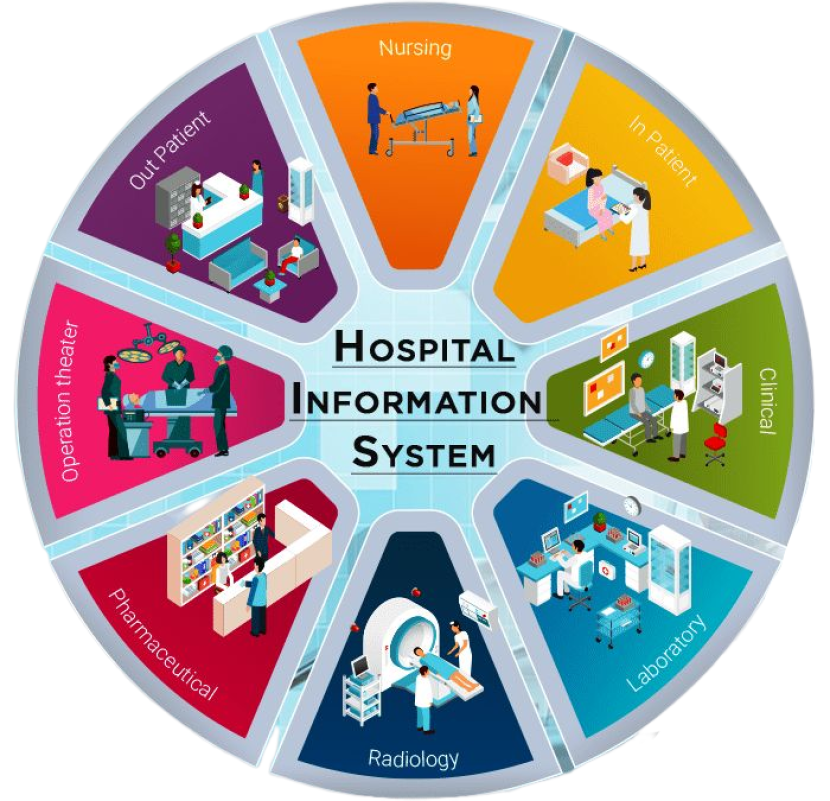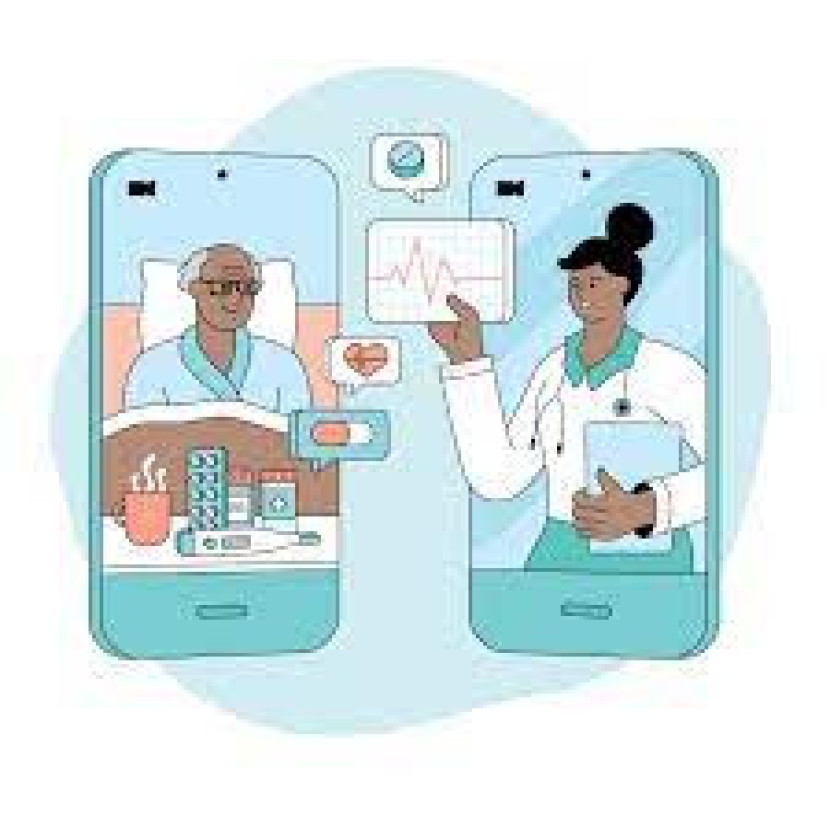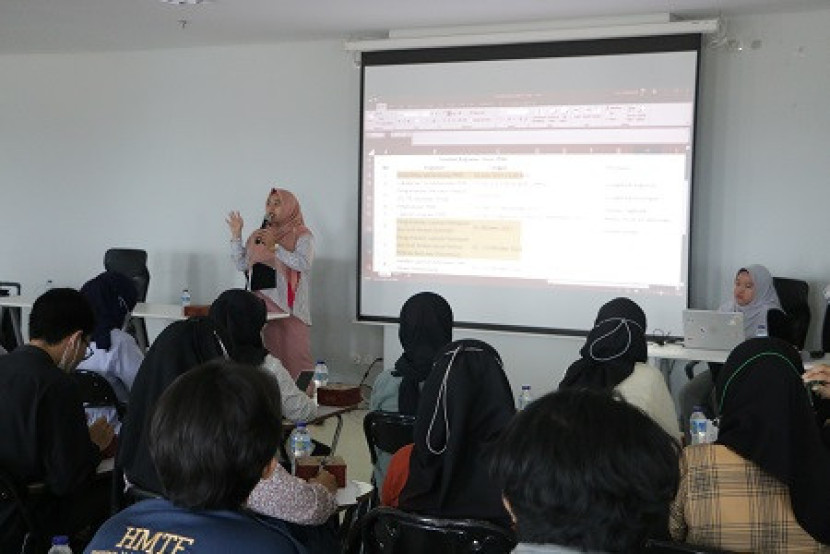 Abdullah Miry
Abdullah Miry
The Role of Hospital Information Systems in Enhancing Collaboration among Healthcare Professionals
Info Sehat | 2024-11-21 23:34:28Introduction
In the healthcare industry, the implementation of Hospital Information Systems has been a crucial step towards improving collaboration among healthcare professionals. These systems provide a centralized platform for the exchange of information, facilitating seamless communication and data sharing among clinicians, nurses, and other healthcare providers. (Noumeir, 2012) (Zhang et al., 2002). The primary purpose of Hospital Information Systems is to automate and streamline various healthcare-related tasks, such as the digitization of medical records, clinical test requests, and patient data management (Belmonte et al., 2023). Interoperability is essential in these systems, as the different subsystems within the hospital need to cooperate and communicate effectively to provide comprehensive patient care. (Noumeir, 2012)

Information technology has become a valuable tool in enhancing the quality of healthcare and clinical care, as it helps to facilitate tasks that were previously carried out manually. (Belmonte et al., 2023) In this context, Hospital Information Systems play a pivotal role in improving access, collaboration, and data sharing among healthcare providers, patients, and researchers. (Zhang et al., 2002). In todayâ s complex healthcare systems, collaboration among healthcare professionals is essential for delivering high-quality patient care. Effective communication and teamwork help address challenges such as rising patient demands, specialized treatments, and the need for multidisciplinary approaches to care. Hospital Information Systems (HIS), designed to integrate administrative, financial, and clinical processes, have emerged as critical tools for enhancing collaboration.

One of the key advantages of Hospital Information Systems is their ability to facilitate collaboration among healthcare professionals. This article explores the role of HIS in improving communication, fostering interdisciplinary teamwork, reducing medical errors, and enabling real-time decision-making. A review of relevant literature and empirical studies underscores the significance of HIS in transforming healthcare collaboration.
Literature Review:
Extensive research has examined the potential of HIS to improve healthcare outcomes and streamline communication. The following studies provide insights into the various dimensions of HIS and its impact on collaboration.
HIS and Communication
Centralized access to patient information is a key feature of HIS. Abraham et al. (2020) found that HIS systems improve the speed and accuracy of information exchange, particularly in emergency scenarios where delays can compromise patient outcomes. Similarly, McDowell et al. (2019) observed that HIS enhances communication during interdisciplinary case reviews, enabling more cohesive team discussions.
Interdisciplinary Collaboration
Smith et al. (2021) highlighted the role of HIS in chronic disease management, where care requires input from multiple specialists. Their study found that HIS-enabled care plans improved coordination between primary care physicians, nurses, and specialists, leading to better outcomes for patients with complex conditions. Wilson et al. (2022) reported similar benefits in oncology, where HIS facilitated the alignment of treatment plans across teams.
Error Reduction
The automation and decision-support tools within HIS have been shown to reduce errors. Gupta et al. (2020) and Lin et al. (2021) documented a 30% reduction in medication errors following HIS implementation. Automated alerts and clinical decision support systems (CDSS) play a significant role in preventing errors related to drug interactions, allergies, and dosage.
Real-Time Collaboration
Real-time data access is another critical advantage of HIS. Patel et al. (2021) studied HIS use in trauma care and found that it enabled quicker decision-making by ensuring that all team members had immediate access to relevant patient data. Jackson et al. (2022) emphasized the role of cloud-based HIS in enabling remote collaboration, particularly for specialists consulting on cases from different locations.
Challenges in HIS Adoption
Despite its benefits, HIS implementation comes with challenges. Ng et al. (2020) noted that interoperability issues and high costs are significant barriers to adoption. Additionally, concerns about data security and resistance to change among healthcare staff need to be addressed to fully realize HIS's potential.
Discussion:
HIS as a Driver of Collaboration: Building on the literature, it is evident that HIS serves as a transformative tool in enhancing collaboration among healthcare professionals.
Improved Communication: HIS ensures that healthcare professionals across departments have real-time access to consistent and accurate patient information. This eliminates communication silos and fosters a unified approach to care delivery.
Facilitating Teamwork: By integrating data and processes across disciplines, HIS enables seamless teamwork. Features such as shared dashboards and task management tools help synchronize efforts and enhance accountability among team members.
Reducing Errors: Automated alerts and CDSS within HIS systems proactively identify risks, reducing the likelihood of medical errors. This not only improves patient safety but also strengthens collaboration by fostering trust among team members.
Real-Time and Remote Access: The ability to access HIS remotely, particularly through cloud-based platforms, allows healthcare professionals to collaborate without geographical constraints. This is particularly valuable in telemedicine and in managing cases that require input from external specialists.
Conclusion:
Hospital Information Systems play a pivotal role in enhancing collaboration among healthcare professionals by streamlining communication, supporting interdisciplinary teamwork, and reducing errors. Despite challenges in adoption, HIS systems represent a critical component of modern healthcare infrastructure. Future advancements in technology, including artificial intelligence and machine learning, will further enhance the capabilities of HIS, enabling even greater levels of collaboration and efficiency. As healthcare continues to evolve, HIS will remain a cornerstone of integrated, patient-centered care.
References
1. Abraham, T., et al. (2020). Improving communication efficiency in emergency care through HIS integration. Journal of Healthcare Communication, 34(2), 150–162.
2. McDowell, J., et al. (2019). Interdisciplinary communication in healthcare: The role of HIS platforms. Healthcare Systems Review, 12(1), 45–57.
3. Smith, A., et al. (2021). The impact of HIS on chronic disease management: A multidisciplinary perspective. Chronic Care Journal, 18(3), 210–225.
4. Wilson, R., et al. (2022). HIS and oncology care: Enhancing collaboration for better outcomes. International Oncology Review, 29(4), 310–320.
5. Gupta, S., et al. (2020). Reducing medication errors through HIS: A quantitative study. Patient Safety Reports, 15(6), 67–78.
6. Lin, H., et al. (2021). The role of HIS in minimizing clinical errors: Evidence from case studies. Journal of Clinical Informatics, 8(5), 440–455.
7. Patel, D., et al. (2021). Real-time collaboration in trauma care: HIS at the forefront. Trauma Management Today, 22(2), 98–105.
8. Jackson, L., et al. (2022). Cloud-based HIS and remote healthcare collaboration. Digital Health Innovations, 17(1), 30–45.
9. Ng, K., et al. (2020). Barriers to HIS adoption in developing healthcare systems. Global Health Technology, 11(4), 255–269.
Disclaimer
Retizen adalah Blog Republika Netizen untuk menyampaikan gagasan, informasi, dan pemikiran terkait berbagai hal. Semua pengisi Blog Retizen atau Retizener bertanggung jawab penuh atas isi, foto, gambar, video, dan grafik yang dibuat dan dipublished di Blog Retizen. Retizener dalam menulis konten harus memenuhi kaidah dan hukum yang berlaku (UU Pers, UU ITE, dan KUHP). Konten yang ditulis juga harus memenuhi prinsip Jurnalistik meliputi faktual, valid, verifikasi, cek dan ricek serta kredibel.











